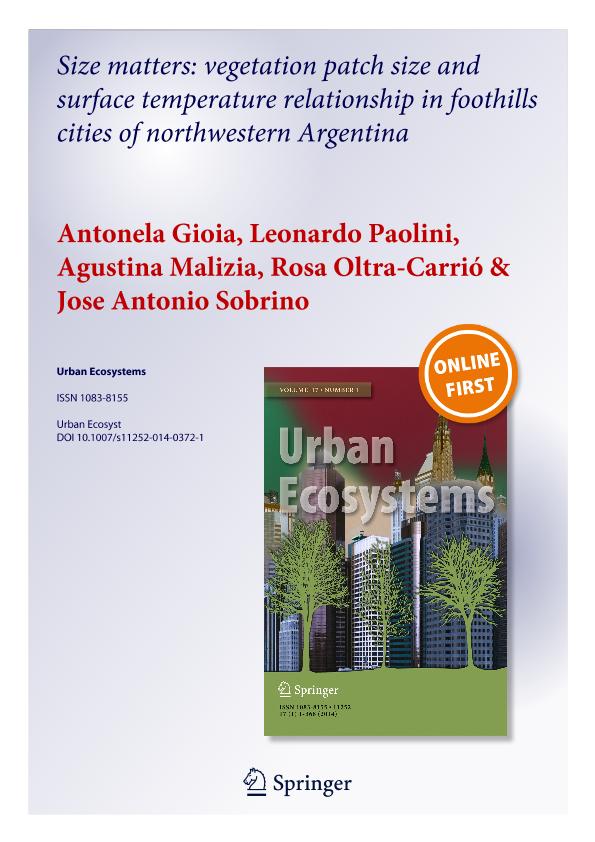Artículo
Size matters: vegetation patch size and surface temperature relationship in foothills cities of northwestern Argentina
Fecha de publicación:
12/2014
Editorial:
Springer
Revista:
Urban Ecosystems
ISSN:
1083-8155
e-ISSN:
1573-1642
Idioma:
Inglés
Tipo de recurso:
Artículo publicado
Clasificación temática:
Resumen
Urbanization is one of the most extreme forms of land alteration. Energy fluxes are severely affected and cities tend to have the Urban Heat Island (UHI) phenomenon, although vegetated areas inside cities could have a positive effect in mitigating UHI effect. Our main objective was to analyze the relationship between vegetation characteristics, patch size and land surface temperature (LST) in three urban areas of northwestern Argentina. We selected 38 green spaces of different size distributed in four cities, all located in the eastern foothills of the subtropical mountain forests. We used Landsat TM satellite images to calculate Normalized Difference Vegetation Index (NDVI) and LST. We assessed the net effect of patch size on LST by computing a Difference Temperature Index. At the regional scale, our results showed that vegetation patch size had a direct effect on reducing the LST of the green space. At a local scale, the analysis of the relationship between vegetation on urban green spaces and LST along a gradient of urbanization showed that green spaces with more vegetation tends to reduce LST. The results showed that largest green spaces were between 1.5 and 2.8 °C cooler than the surrounding built. In order to mitigate the UHI effect in cities, larger green spaces appear to be a possible solution.
Archivos asociados
Licencia
Identificadores
Colecciones
Articulos(CCT - NOA SUR)
Articulos de CTRO.CIENTIFICO TECNOL.CONICET - NOA SUR
Articulos de CTRO.CIENTIFICO TECNOL.CONICET - NOA SUR
Citación
Gioia, Antonela; Paolini, Leonardo; Malizia, Agustina; Oltra Carrió, Rosa; Sobrino, José Antonio; Size matters: vegetation patch size and surface temperature relationship in foothills cities of northwestern Argentina; Springer; Urban Ecosystems; 17; 4; 12-2014; 1161–1174
Compartir
Altmétricas




